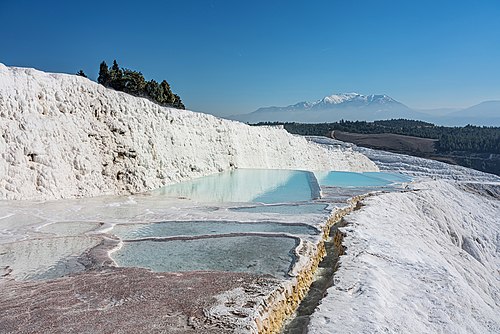Calcinationnoun
The process of calcining: heating a substance to a high temperature, but below its melting point, to bring about thermal decomposition.
Calcinationnoun
The act or process of disintegrating a substance, or rendering it friable by the action of heat, esp. by the expulsion of some volatile matter, as when carbonic and acid is expelled from carbonate of calcium in the burning of limestone in order to make lime.
Calcinationnoun
The act or process of reducing a metal to an oxide or metallic calx; oxidation.
Calcinationnoun
the conversion of metals into their oxides as a result of heating to a high temperature
Calcination
Calcination refers to heating (thermal treatment of) a solid chemical compound (e.g. carbonate ores) to high temperatures in absence or limited supply air or oxygen (O2), generally for the purpose of removing impurities or volatile substances and/or to incur thermal decomposition.The root of the word calcination refers to its most prominent use, which is to remove carbon from limestone through combustion to yield calcium oxide (quicklime).
Sinteringnoun
A process in which the particles of a powder are welded together by pressure and heating to a temperature below its melting point
Sintering
Sintering or frittage is the process of compacting and forming a solid mass of material by heat or pressure without melting it to the point of liquefaction. Sintering happens naturally in mineral deposits or as part of a manufacturing process used with metals, ceramics, plastics, and other materials.










